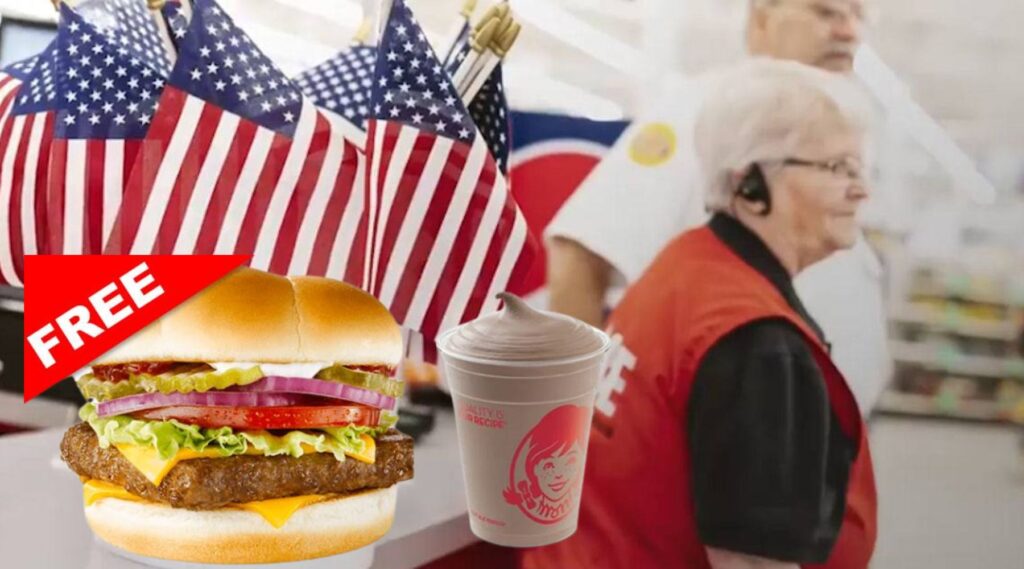McDonalds Play Place: A Sad Sign of the Times
Viral Post Highlights Changes McDonalds Play Place

On Thursday, a McDonald’s in Franklin, TN, sparked widespread discussion when a user shared a photo of its “Play Place” on Threads and X (formerly Twitter). The image showcased a sign reading “Play Place,” but the actual area was far from traditional expectations.
A Disappointing Transformation

Rather than the anticipated slides and ball pits that characterized McDonald’s play areas for decades, this location featured just two chairs facing a wall with two digital screens tucked into a corner. This stark change raises questions about the future of play areas in McDonald’s restaurants.
Lack of Clarity of McDonalds Play Place
McDonalds Play Place Without the sign, one might not even realize the area was intended for children’s play. This shift represents a significant departure from the vibrant, engaging environments that have been synonymous with McDonald’s for over 50 years.

Response from McDonalds Play Place
Inquiries made to McDonald’s about whether this is a new design direction or an individual franchise decision have gone unanswered, leaving many to speculate on the implications for other locations.
Convenience vs. Experience, McDonalds Play Place
While the new setup is certainly more convenient and cost-effective—requiring less maintenance and cleaning than traditional play areas—it also diminishes the experience that has long been a hallmark of McDonald’s for families.


The Nostalgia Factor, McDonalds Play Place
For many, McDonald’s Play Place is tied to cherished childhood memories, from birthday parties to playdates. The original play areas, known as McDonaldland Parks, were designed to attract families and create a fun environment for kids.
The Screen Debate
Critics argue that replacing physical play structures with digital screens sends the wrong message. Although children may enjoy screen time, it doesn’t replace the physical activity and imaginative play that traditional play areas provided.
A Missed Opportunity, McDonalds Play Place
The decision to simplify play areas may have seemed financially sound, but it overlooks the emotional connection customers have with McDonald’s. The nostalgia for Play Place is rooted in the joyful experiences it offered, which cannot be replicated by screens alone.
Conclusion: Rethinking Play, McDonalds Play Place
This change serves as a reminder of the importance of understanding customer values. If McDonald’s aims to attract families, simply providing a couple of digital screens is insufficient. The nostalgia and joy associated with active play are what truly resonate with customers, especially in a world increasingly dominated by screens.
Recent Discussions on Play Place Changes, McDonalds Play Place
Recent discussions about changes to McDonald’s Play Places have highlighted a significant shift in how these areas are designed and utilized.
Changes in Design and Functionality, McDonalds Play Place
- Modernization of Play Areas: Many McDonald’s locations are moving away from traditional play structures, such as slides and ball pits, towards more minimalist designs. The viral photo from Franklin, TN, showcasing a “Play Place” consisting of just two chairs and two digital screens has sparked nostalgia and disappointment among patrons.
- Focus on Digital Engagement: The new design trends suggest a shift towards digital engagement rather than physical play. Some locations are replacing play equipment with screens, reflecting a broader societal trend of increasing screen time for children.
- Cost and Maintenance Considerations: The move to simpler play areas is driven by cost-saving measures. Maintaining large play structures can be expensive and labor-intensive, especially in a post-pandemic world where cleanliness is a priority.
Public Reaction, McDonalds Play Place
- Nostalgia for Traditional Play Places: Many customers have expressed sadness over the changes, reminiscing about the joy and excitement that the old Play Places provided. The nostalgia is particularly strong among those who grew up attending birthday parties at McDonald’s, where the play areas were a central feature.
- Concerns About Child Development: Critics argue that reducing physical play opportunities in favor of screen time is detrimental to children’s development. Parents are already facing challenges in limiting their children’s screen exposure, and the new Play Place designs may exacerbate this issue.
Fast-Food Chain Responses to Changing Trends
Fast-food chains have been responding to trends in children’s entertainment and play areas in various ways, adapting to changing consumer preferences and societal concerns.
Chuck E. Cheese
- Play Structure Redesign: Chuck E. Cheese has continuously updated its play areas, focusing on indoor play structures that balance physical activity with digital gaming. They have introduced more interactive games and experiences while maintaining a strong emphasis on physical play.
- Safety and Cleanliness: In response to health concerns, especially post-pandemic, they have enhanced cleaning protocols and redesigned spaces to be more sanitized and family-friendly.
Burger King
- Simplified Play Areas: Some locations have opted to reduce or eliminate play areas altogether. Instead, they focus on creating a more streamlined dining experience, often featuring digital menus and self-service kiosks.
- Emphasis on Digital Engagement: Like McDonald’s, Burger King has explored integrating digital experiences, such as mobile games and interactive apps, to engage children while they wait for their meals.
Wendy’s
- Limited Play Facilities: Wendy’s has generally not emphasized play areas in their restaurants, choosing instead to focus on a family-friendly atmosphere through menu offerings and promotions. Their approach tends to prioritize comfort and aesthetics over play structures.
- Community Engagement: Wendy’s often engages with families through community events and sponsorships, which helps build a family-friendly brand without the need for physical play areas.
Pizza Hut
- Family Dining Focus: Pizza Hut has shifted its focus towards family dining experiences, offering promotions for family meals rather than play areas. They aim to create a welcoming environment for families but have moved away from dedicated play spaces.
- Interactive Promotions: The chain has developed interactive promotions, such as themed events and contests, aimed at engaging kids and families outside of a physical play area.
Dairy Queen
- Community-Centric Approach: Dairy Queen emphasizes community involvement and local events, creating a family-friendly atmosphere without the need for play structures. Their focus is on creating memorable experiences through community engagement.
Trends in the Fast-Food Industry
Other fast-food chains have responded to the changing landscape of children’s play areas in various ways, particularly as McDonald’s Play Places have evolved.
Reduction of Play Areas
- Chick-fil-A: Similar to McDonald’s, Chick-fil-A has seen a decline in the number of indoor play areas. While some locations still feature playgrounds, many have opted to remove them entirely or replace them with more seating to accommodate changing customer preferences and reduce maintenance costs.
Focus on Digital Experiences
- Integration of Technology: Fast-food chains are increasingly incorporating digital elements into their dining experiences. This includes interactive screens and gaming options appealing to children, reflecting a shift towards digital engagement rather than traditional physical play structures.
Emphasis on Cleanliness and Safety
- Health and Safety Concerns: The COVID-19 pandemic has heightened awareness around cleanliness in public spaces. Fast-food chains are responding by prioritizing hygiene in their dining areas, leading to the closure or redesign of play areas that are difficult to maintain. Some chains are opting for simpler, easier-to-clean setups instead of elaborate play structures.
Community Engagement
- Alternative Play Options: Some chains are exploring partnerships with local community centers or parks to provide children with play opportunities outside of the restaurant environment. This approach allows them to maintain a family-friendly image without the overhead of maintaining a play area on-site.
Market Research and Adaptation
- Understanding Customer Preferences: Fast-food chains are increasingly relying on market research to understand the preferences of families. As the trend shows a decline in the use of traditional play areas, many chains are adapting their strategies to focus on what families value most, which may not necessarily include physical play spaces.
Successful Integration of Outdoor Play Options
While many fast-food chains have been moving away from traditional indoor play areas, some have successfully integrated outdoor play options to enhance the dining experience for families.
Chick-fil-A
- Outdoor Playgrounds: Many Chick-fil-A locations feature outdoor playgrounds that provide children with a space to play while parents enjoy their meals. These playgrounds often include climbing structures and slides, encouraging physical activity in a safe environment.
- Family-Friendly Atmosphere: Chick-fil-A maintains a strong focus on creating a welcoming environment for families, making their outdoor play areas an integral part of the dining experience.
McDonald’s
- Outdoor Play Areas: Some McDonald’s locations have opted to include outdoor play structures as part of their restaurant design. These areas often feature equipment that encourages active play, such as climbing frames and slides, appealing to families looking for a fun dining experience.
- Community Engagement: By providing outdoor play options, McDonald’s aims to create a community-centric atmosphere that attracts families, especially in suburban areas where outdoor space is more available.
Burger King
- Playgrounds in Select Locations: Certain Burger King restaurants have incorporated outdoor playgrounds, allowing children to play outside while parents relax. These areas are designed to be safe and engaging, promoting physical activity among young diners.
Dairy Queen
- Outdoor Seating with Play Options: Some Dairy Queen locations feature outdoor seating areas that are adjacent to play structures. This setup allows families to enjoy their meals while children engage in outdoor play, fostering a family-friendly environment.
Conclusion
These chains demonstrate that integrating outdoor play options can enhance the dining experience for families, providing children with opportunities for physical activity while parents enjoy their meals. By focusing on creating engaging and safe outdoor environments, these fast-food restaurants are adapting to the needs of modern families.
The evolution of McDonald’s Play Places is not just a reflection of changing design trends but also a commentary on societal shifts regarding play and childhood. As these changes unfold, the challenge remains for fast-food chains to balance convenience, cost, and the invaluable experiences that families seek.

